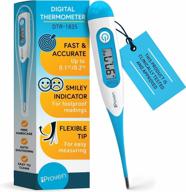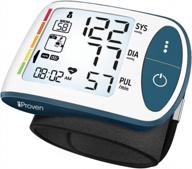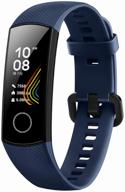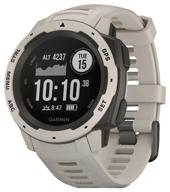
Review on MIO Slice: Enhanced Heart Rate and Activity Tracker by Joe Clayton

Has the basis of a really great system but is weak in execution.
Slice has a lot of good stuff. I think the basic idea is right - steps are very superficial and don't measure anything. Heart rate is a much better indicator if you want to measure physical activity. Everything is fine with the device as a whole - quite convenient. It is able to read your pulse. It sends data to your phone where the app gives you a score. But there are many details that make it practical. Everything seems to work like a Kickstarter project these days - throw something out the door and work out the details later. Slice seems to be following this pattern. For example: - Why is the button so huge? In shape, you might think this is a toggle switch, but it's not. Because it's so big, it clicks if your abs are a little off-center when you squeeze it, but nothing happens. That big protrusion on the button that seems to say "click me here" is the bait. If you click there, nothing happens. It's very annoying to notice this for the first minute or two of use during pairing and firmware updates. - Failed firmware update. The first block I bricked myself during the firmware update. The second failed on the first try but succeeded on the second try. Yes, updating the firmware is difficult. But it needs to be reliable when releasing devices with old firmware, so updating the firmware is the second thing the user has to do when setting up the device. - The app is so featureless that it looks more like a proof of concept than a real fitness app. It collects the data in a highly compressed histogram, which would be nice as an overview, but that's about it. You get your magic PAI estimate but don't see the real data. It is not clear whether the data will remain entirely on the phone. While syncing with the device, it says "Syncing with server" but you don't see it. From a privacy perspective, it would be cool if the data was only on the phone, but I can't find a way to access the data. You can't export it to Apple Health Kit or upload it anywhere (like Garmin devices work with the Garmin Connect website). As far as I can tell, your data is locked in this app and there is no way to retrieve or back it up. - The PAI rating seems like a really good idea. Steps are a shallow metric and other trackers can't even count accurately. But the PAI estimate seems somewhat arbitrary. For example, I get 25 points if I walk around the supermarket for 30 minutes. 50 points for 18 miles of speed inline skating in just over an hour. I understand that points are just an arbitrary number. In any case, it's all just for motivation. But the points must have at least a small meaning, otherwise it doesn't motivate. When the results don't make sense, you feel like you're being cheated on something. It is possible that the glasses will even out over time with more use. - Sleep tracking is almost non-existent. This gives you a highly compressed chart similar to a training chart with light sleep, deep sleep, and wakefulness. It seems that the HR display uses the "resting heart rate" as the minimum value and shows nothing below it. This is a bad idea, as heart rates are often well below this value at night. There's a known dip at bedtime, that's the fraction of heart rate you want to see for sleep tracking, but the chart clips it. It's just stupid. The bottom of the chart should be the lowest data value, not the "resting heart rate". [Update: It looks like the device is constantly updating the resting heart rate over time to the lowest observed value (although it's hard to tell because you can't easily confirm a minimum value). This is a bad idea, since "resting heart rate" usually refers to your daily minimum level of alertness. The nighttime low can be well below that, but you don't want to treat this as a "resting heart rate" for training purposes.] - I get about a day's use of this between charges. I then turned off all vibrations and notifications and will try never to wake up the display to see if I can last two days. [Update: By disabling all beeps and alerts and not fiddling with them unnecessarily I burned 20% of the charge in a day so you should get 4-5 days of use with minimal use. Probably 1 day if you turn on all alerts.] - The physical device feels solid and comfortable. After 3 months of use, the screen is still unscratched despite accidentally hitting it a couple of times. It's pretty handy, as if it doesn't exist. The strap and the device itself seem to hold up perfectly. I get it wet almost every day and so far no problems. One month update: After a month of use I'm still getting PAI values around 230-280. It probably scales with your fitness level, making 100 the right number for you and making it harder and harder to get high PAI scores. So far I don't see it. It has become quite common to wear it. I hardly notice anything anymore. 3 month update: Approximately every 2-3 weeks the phone app hangs on the purple "Synchronizing with Server" screen and then crashes. After that it just shows this screen and then crashes. The only way I've found to get around this is to uninstall and reinstall the app. Then you will lose at least part of your data. It's pretty annoying. Hope this gets fixed soon. In summary, this seems like the way to go if you want to track heart rate throughout the day. But there is a lot of room for improvement. Hopefully in the future there will be updates to the PAI app that will free up the data from prison and make it more useful.
- PAI is a Personal Activity Analysis, a scientifically proven indicator of how much activity you need to do to stay healthy.
- Very Expensive
New products
Comments (0)
Top products in 🚴♂️ Fitness & Activity Monitors

Digital Flexi-Tip Thermometer - Accurate Fever Detection For Adults And Kids - Quick And Reliable Reading With Smiley Indicator And Protective Case By IProvèn®

44 Review
![fast & accurate digital ear thermometer for adults, kids & babies - iproven dmt-511 [forehead & ear mode, led display, fever alarm and 35 memory slots] logo](https://images.revain.org/blob/hxzl8g2o_49fd7f485d@128x128.jpg)
Fast & Accurate Digital Ear Thermometer For Adults, Kids & Babies - IProven DMT-511 [Forehead & Ear Mode, LED Display, Fever Alarm And 35 Memory Slots]

44 Review

Track Your Oxygen Levels And Heart Rate With IProven Fingertip Pulse Oximeter – Includes Battery, Case, And Lanyard In Blue

49 Review

Impressive IPROVEN BPM-417 - Digital Wrist Blood Pressure Monitor For Home Use - Large Cuff And Heart Rate Monitor - Real-Time BP Reading With Wrist Guide, Movement Sensor, And Backlight

42 Review





